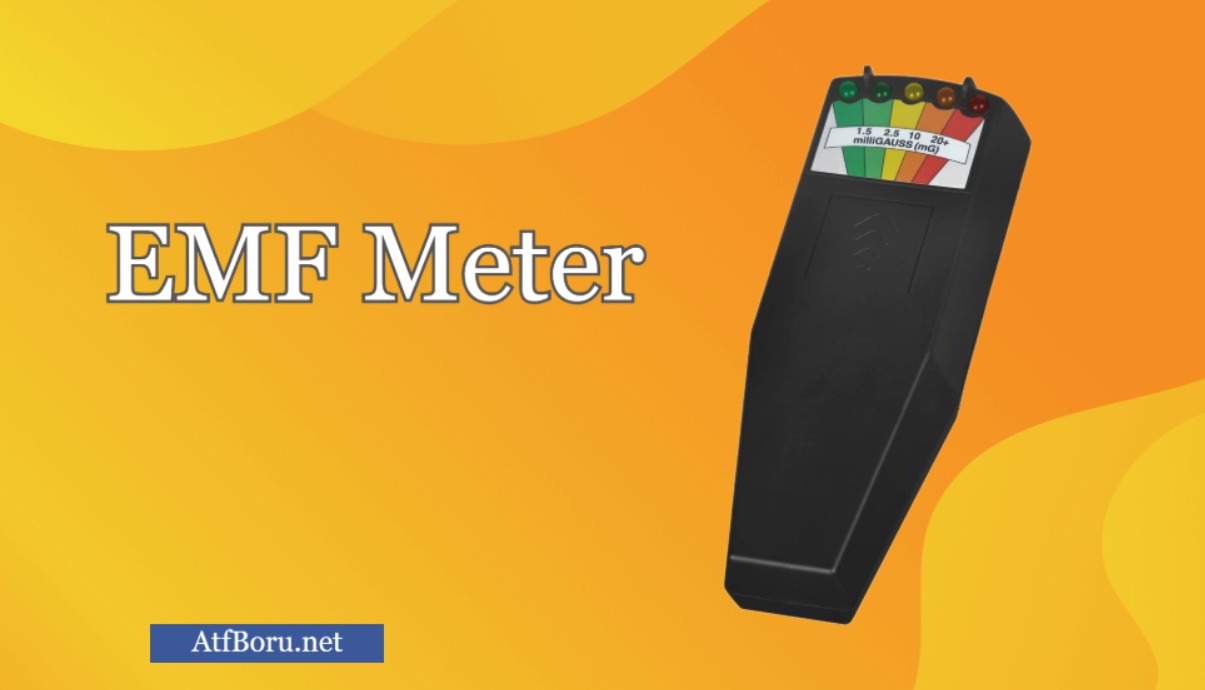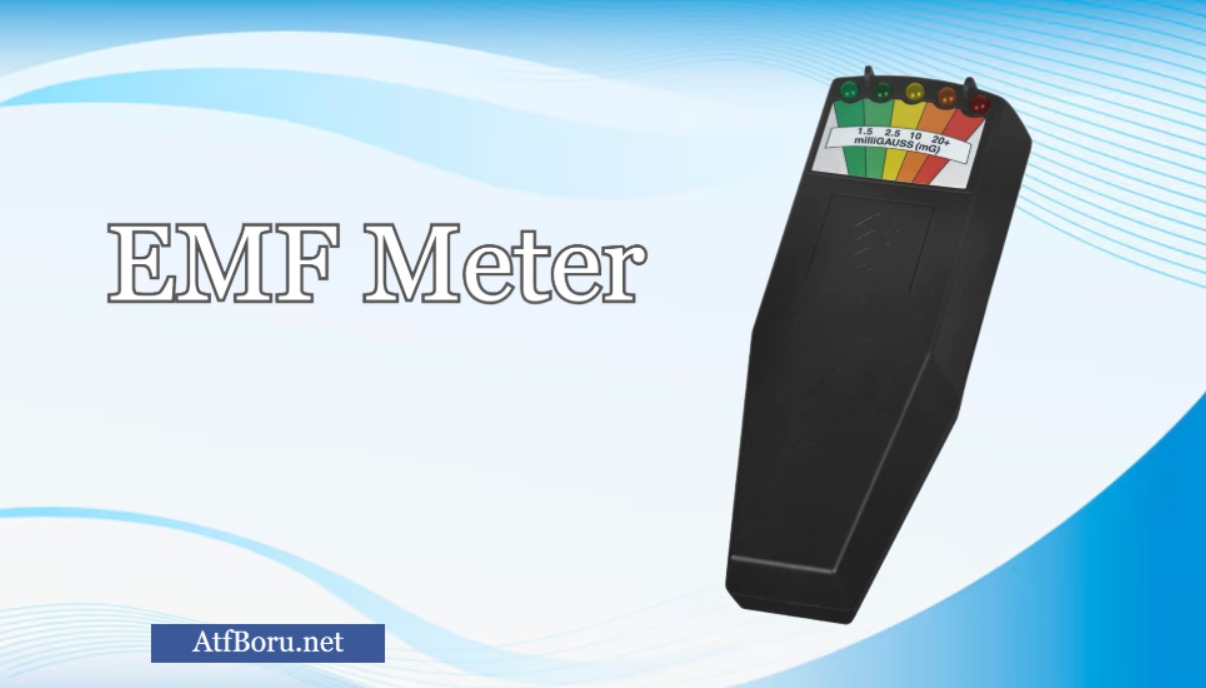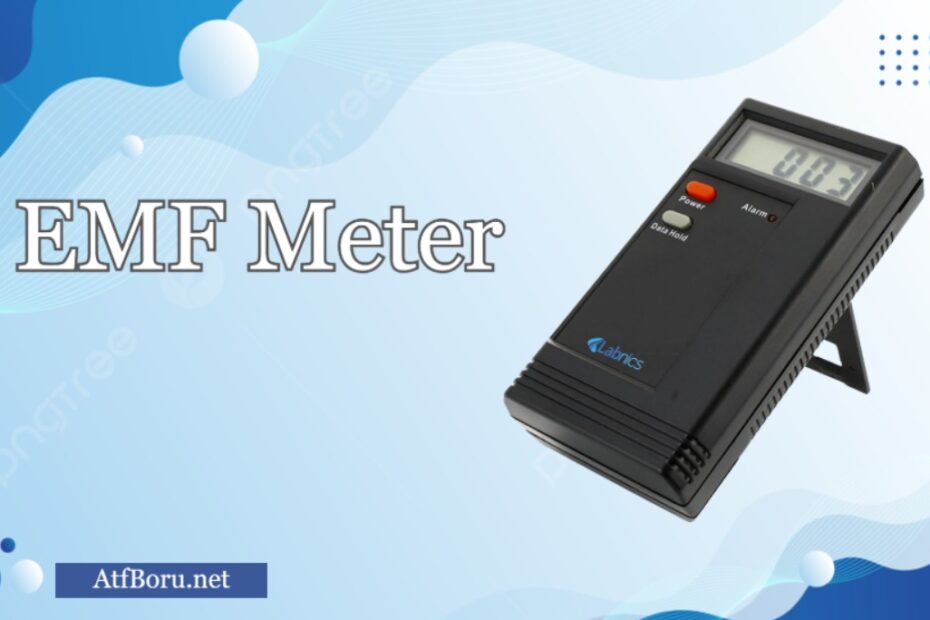Introduction
Have you ever wondered about the invisible energy around you? From cell phones to Wi-Fi routers, many everyday devices release electromagnetic fields (EMFs). These invisible waves of energy are all around us.
While most people never think twice about them, some are concerned about how they might affect health. That’s where an emf meter comes in.
An emf meter is a tool used to measure electromagnetic fields. People use them to detect the presence and strength of EMFs in homes, offices, or other places. But why would you need one? And how do they even work?
Let’s break it all down in simple words.
What Is an EMF Meter?

An emf meter is a small device that measures the strength of electromagnetic fields. These fields come from many sources, like:
- Electrical wiring
- Microwave ovens
- Wi-Fi routers
- Mobile phones
- Power lines
The job of an emf meter is to detect these fields and give a reading. This reading shows how strong the EMF is in that area.
Types of EMFs That an EMF Meter Can Measure
Not all EMFs are the same. They come in different types:
1. Electric Fields
These are created by voltage. Even if no current is flowing, if a device is plugged in, it creates an electric field.
2. Magnetic Fields
These are created when electricity flows. So, when your microwave or vacuum cleaner is turned on, a magnetic field is present.
3. Radiofrequency (RF) Fields
These come from devices that send signals wirelessly, like cell phones, Wi-Fi, and Bluetooth devices.
Most EMF meters are designed to measure at least one of these. Some advanced meters can measure all three.
How Does an EMF Meter Work?
An EMF meter works by detecting energy from electromagnetic fields. It picks up on changes in the electric or magnetic field in the area. Here’s how it happens:
- The meter has sensors inside.
- These sensors react to energy in the air.
- The screen on the meter then shows the level of EMF in numbers or with color lights.
Different meters may work in slightly different ways, but the goal is always the same—to show how much EMF is present.
Why You Might Need an EMF Meter
Now you know what an EMF meter is and how it works. But why would someone need one?
Let’s look at some common reasons.
1. Health Concerns
Some people believe that long-term exposure to high levels of EMF could affect health. They report symptoms like:
- Headaches
- Fatigue
- Trouble sleeping
- Dizziness
Although science is still unclear, people with these symptoms sometimes use an emf meter to check their environment.
2. Home Safety Checks
Homes with poor wiring or old electrical systems can have high EMFs. You might use an emf meter to:
- Check the EMF level in your bedroom
- Test the wall near your child’s bed
- Find hot spots around fuse boxes or power outlets
This helps you decide if something needs to be moved, shielded, or turned off.
3. Testing Electronics and Appliances
Do you ever wonder how much EMF comes from your laptop or microwave? An emf meter can show you.
You can test:
- TVs
- Gaming systems
- Hairdryers
- Fridges
This helps you decide where to place electronics and how far to sit from them.
4. Finding Sources of EMF Pollution
Sometimes you can’t tell where the EMF is coming from. You may feel unwell or want to lower your EMF exposure.
Using an emf meter helps you:
- Walk around the room
- Test each area
- Find the source of strong EMF
Once found, you can take action to reduce it.
5. Paranormal Investigations
Some ghost hunters use EMF meters to find unexplained changes in energy. This use isn’t based on science, but it’s popular in TV shows and paranormal studies.
How to Use an EMF Meter
Using an EMF meter is easy. Here are the steps:
- Turn on the meter – Most meters have a simple power button.
- Set the type – Choose electric, magnetic, or RF, depending on your meter.
- Walk slowly – Hold the meter steady and move around the area.
- Watch the screen – Some meters show numbers; others use colors or sound to alert you.
- Check readings – High numbers mean more EMF is present.
Most emf meters come with a user guide. Make sure to read it carefully for best results.
What to Look For When Buying an EMF Meter
Not all emf meters are the same. When buying one, think about what you want to use it for.
Here are some tips:
- Type of EMF – Do you want to measure electric, magnetic, or RF? Some meters only do one type.
- Ease of use – Look for a meter with a clear screen and simple controls.
- Accuracy – Check reviews to see if the readings are reliable.
- Budget – Some meters are under $50. Others cost over $200. Pick what fits your needs.
Using your emf meter regularly helps you understand your environment better.
Simple Ways to Reduce EMF with the Help of an EMF Meter
Once your emf meter shows where EMFs are strong, you can:
- Move your bed away from the wall socket
- Unplug devices when not in use
- Use speaker mode instead of holding your phone to your head
- Keep Wi-Fi routers away from bedrooms
Small changes can make a big difference.
Do EMF Meters Need Maintenance?

Not much. Just keep your emf meter clean and store it safely. Change the batteries when needed. Some meters may need recalibration after long use.
EMF Meter Safety Tips
- Keep it dry and away from extreme heat.
- Don’t drop it.
- Use it only for the purpose it was made for.
- Read the manual before starting.
Treat your emf meter well, and it will give you years of use.
Conclusion
An emf meter is a useful tool for checking electromagnetic fields around you. Whether you’re concerned about health, home safety, or just curious, it helps you see what’s usually invisible.
With easy steps, anyone can use an emf meter to find EMF levels and take control of their space. If you think something feels off, this small device could be the first step to understanding why.
You don’t need to be a scientist to use an emf meter. Just follow the steps, stay alert, and use the information to make your home or office a better place.
